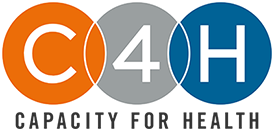The stats tell us that our efforts to leverage high-impact HIV prevention in the fight against HIV are working. The Center for Disease Control (CDC) says we’ve averted more than 350,000 new HIV infections. But the virus still infects 50,000 people every year. Today, there are 1.2 million people living with HIV, which creates more opportunities for it to spread.
These numbers are driving the CDC’s targeted approach toward a new “High-Impact HIV Prevention” model to reduce the number of new infections and keep costs low. It’s part of a multi-pronged national approach under the National HIV/AIDS Strategy. So, what is the impact of this scientifically proven, cost-effective and scalable approach?
Why High Impact Prevention Matters
High Impact HIV Prevention methods have reduced the number of new cases each year. These proactive methodologies have been big undertakings to roll out. The payoff is that, in addition to the lives saved, there is a substantial reduction in healthcare costs associated with the long-term care HIV requires. A study in 2015 quantified these cost savings, proving that prevention is not only the best way to prevent HIV; it is also the most cost-effective.
The study, published in Medical Care, brought together 13 researchers to extrapolate data and quantify the total dollars saved for each averted HIV infection in the United States. The study used a computer algorithm to determine the average lifetime medical costs of treating one HIV-infected patient.
The model was based on the assumption that the person was infected around 2012 at age 35. Given that the life expectancy of a person with HIV in this timeframe is just over 29 years, researchers found that the estimated lifetime treatment costs for a person infected with HIV amounted to $326,500. The breakdown in costs included:
- 60% of the $326,500 was for a lifetime of antiretroviral medications.
- 15% was for medications other than antiretroviral drugs.
- 25% covered non-medication costs of HIV-related care.
The cost to our society of even one HIV infection encompass more than medical treatment, taking a toll on social service providers, housing costs, lost productivity, and the emotional distress of both patients and their families. The study concluded, “With greater success in effectively treating HIV as a chronic disease, the economic value of HIV prevention in the U.S. increases.”
With CDC estimates suggesting that our efforts to reduce HIV infections have prevented 350,000 new cases since the first outbreak, the cost savings have been substantial.
High Impact HIV Prevention Works
Three decades of effort has shown us that HIV prevention methods work. The CDC says new infections have stabilized, and we’ve seen dramatic reductions in the annual volume of new HIV cases in the U.S. Mother-to-child transmissions have declined as has new cases in injection drug users. One study said, “Effective treatment has increased life expectancy after HIV infection, and deaths from non-AIDS-related causes now exceed deaths from AIDS for those with HIV in the US.”
Over the years, we’ve learned that our approach to prevention and treatment should include the following best practices:
- Access to condoms and sterile syringes to reduce the risk of spreading the disease.
- Prevention programs to promote healthy behaviors for people living with HIV and their partners.
- Prevention programs for the most vulnerable populations. This includes HIV testing, counseling, and linking people to services that help them prevent the spread or get treatment.
- Treatment for substance abuse.
- Screening and treatment for sexually transmitted diseases.
Part of the High Impact HIV prevention approach includes pre-exposure prophylaxis (PrEP), which has at-risk people take a daily dose of antiretroviral drugs to lower chances
C4H helps non-profits maximize their delivery of services to people living with HIV. Contact us to help improve the impact of your programs and outcomes.







